solar wind: magnes magnus magnifique!
What is our relationship with energy? What is the nature of our fascination with it? Are we capable not only of being flexible in the ways we produce and use energy but also coping with fundamental shifts in the way we perceive our need for it?
I have always associated ‘wind’ with ‘change’. In Solar Wind: Magnus Magnes Magnifique! the prevailing local wind shifts the alignment of the array in relation to its source of illumination. The imagery, sourced from scientific publications regarding electricity, electromagnetism and geomagnetic fields is drawn into the surface of the wing/windmill blade-like panels. [1] It reminds us of the many people who have contributed their resources, research and inspirations into an ever-present and ever-changing need for energy, in the pursuit of understanding its origins and harnessing its power. Centuries of dreaming, thinking and research have brought us this convenient solar LED technology. Yet in the simple array of this sculpture we may suspend the complexity of knowledge poured into scientific conundrums and be purely inspired and in awe of their simplicity in resolution: a world in flux, sometimes light and sometimes dark.
2012. Steel, engraved acrylic sheet, solar LED garden lights. Dimensions variable: 1-12 units - each H240cm x W40cm x D135cm.
Installation view at night with audience and moonrise during La Lune. Energy Producing Art. Exhibition at Longreef Coastal Walk, Collaroy in 2014.
2012. Panel B: Radiant. Sunspot groups and residual rotation rates, Howard. Panel C: You are Here! Geomagnetic secular variation in Gauss per year, vertical intensity at core surface, Hide and Roberts after McDonald
Installation view of panels B (left) and C (right) at UNSW Art & Design in 2014.
2012. Panel E: Explorer. Marine magnetic anomalies spreading seafloor, Allan Cox [ed.] from Raff and Mason.
Installation view at UNSW Art & Design, 2014.
2012.
Installation view of Panel E at night during La Lune. Energy Producing Art Exhibition at Longreef Coastal Walk, Collaroy in 2014.
2012. Panel K: Dipole and Magnetic Shift. Glatzmaier and Robert's simulation of Earth's magnetic field during a polarity reversal from reversed to normal showing a considerably weakened field intensity at Earth's surface.
Installation view at sunset during La Lune.Energy Producing Art Exhibition at Longreef Coastal Walk, Collaroy in 2014.
Panel K a moment later as the evening light changes during La Lune. Energy Producing Art Exhibition at Longreef Coastal Walk, Collaroy in 2014.
2012. Panel K in the daylight during the exhibition Desert Equinox at Broken Hill.
2012. Panel L: Gilbert's inclinations. 16th Century physician William Gilbert's sketches of a 16th Century contemporary equivalent of using a modern compass needle to measure magnetic orientation.
Installation view of Panel E at night during La Lune. Energy Producing Art Exhibition at Longreef Coastal Walk, Collaroy in 2014.
2012. Panel D: Faraday, Solar and Me. A Faraday sketch of electromagnetic induction coils with drawing by the artist.
Detail at night during the exhibition Desert Equinox in Broken Hill.
2012. Panel B: Radiant. Sunspot groups and residual rotation rates, Howard.
Installation view of Panel B at night during La Lune. Energy Producing Art Exhibition at Longreef Coastal Walk, Collaroy in 2014.
2012. Panel B: Radiant. Sunspot groups and residual rotation rates, Howard.
Installation view of Panel B in daylight at the studios of the Environmental Research Initiative for Art (ERIA), UNSW Sydney.
2012. Panel A: Normal Polarity. Humboldt et al to Sabine with Glatzmaier and Roberts.
Installation view, detail of Panel A, during the exhibition Desert Equinox in Broken Hill, 2012.
2012. Panel F: Age of millions barcode. Geomagnetic polarity timescale for the past 80 million years, Gillian Turner.
Detail, installation view at UNSW Art & Design, 2014.
2012.
Moonrise with little boy at La Lune.Energy Producing Art.


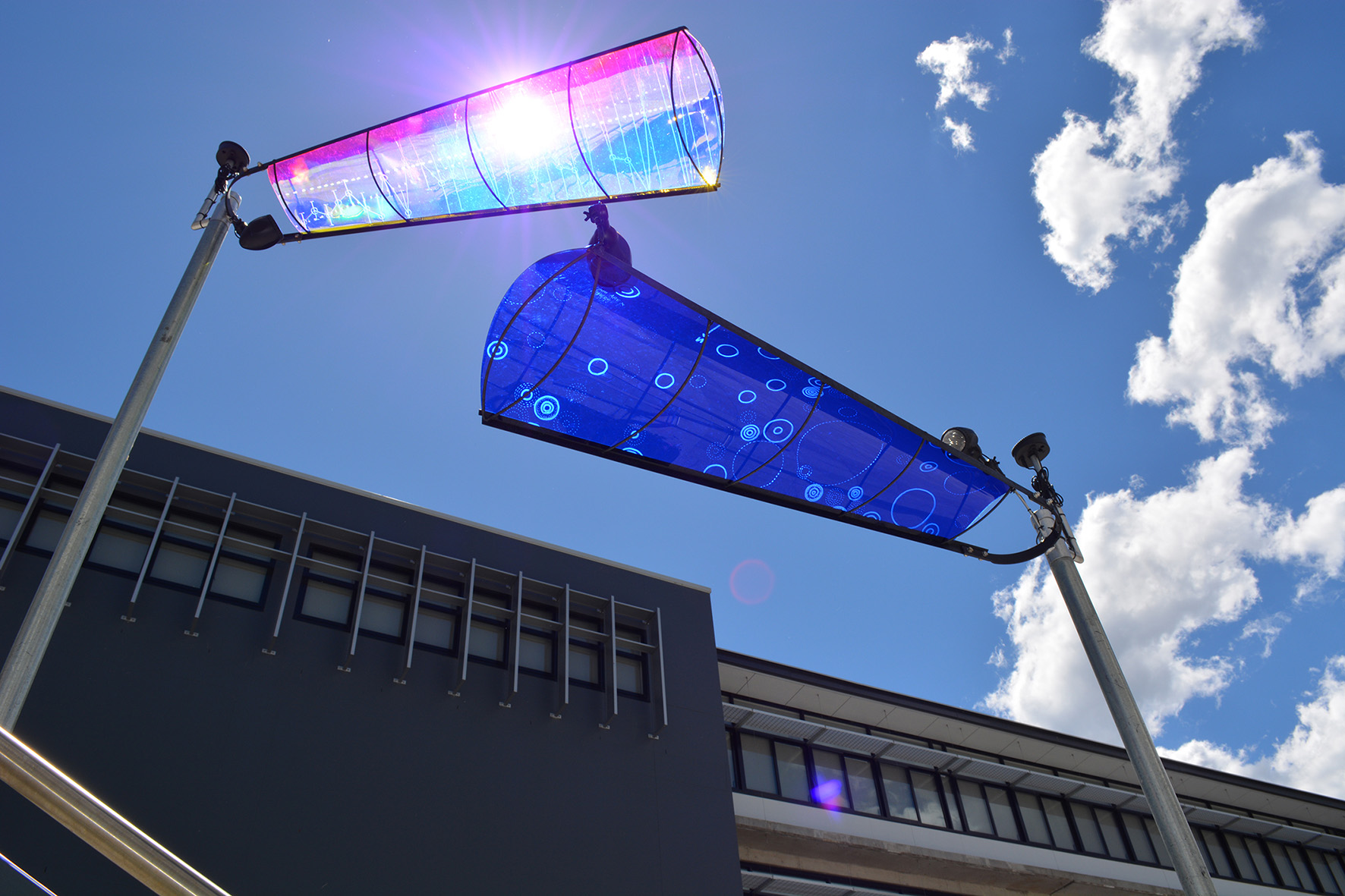
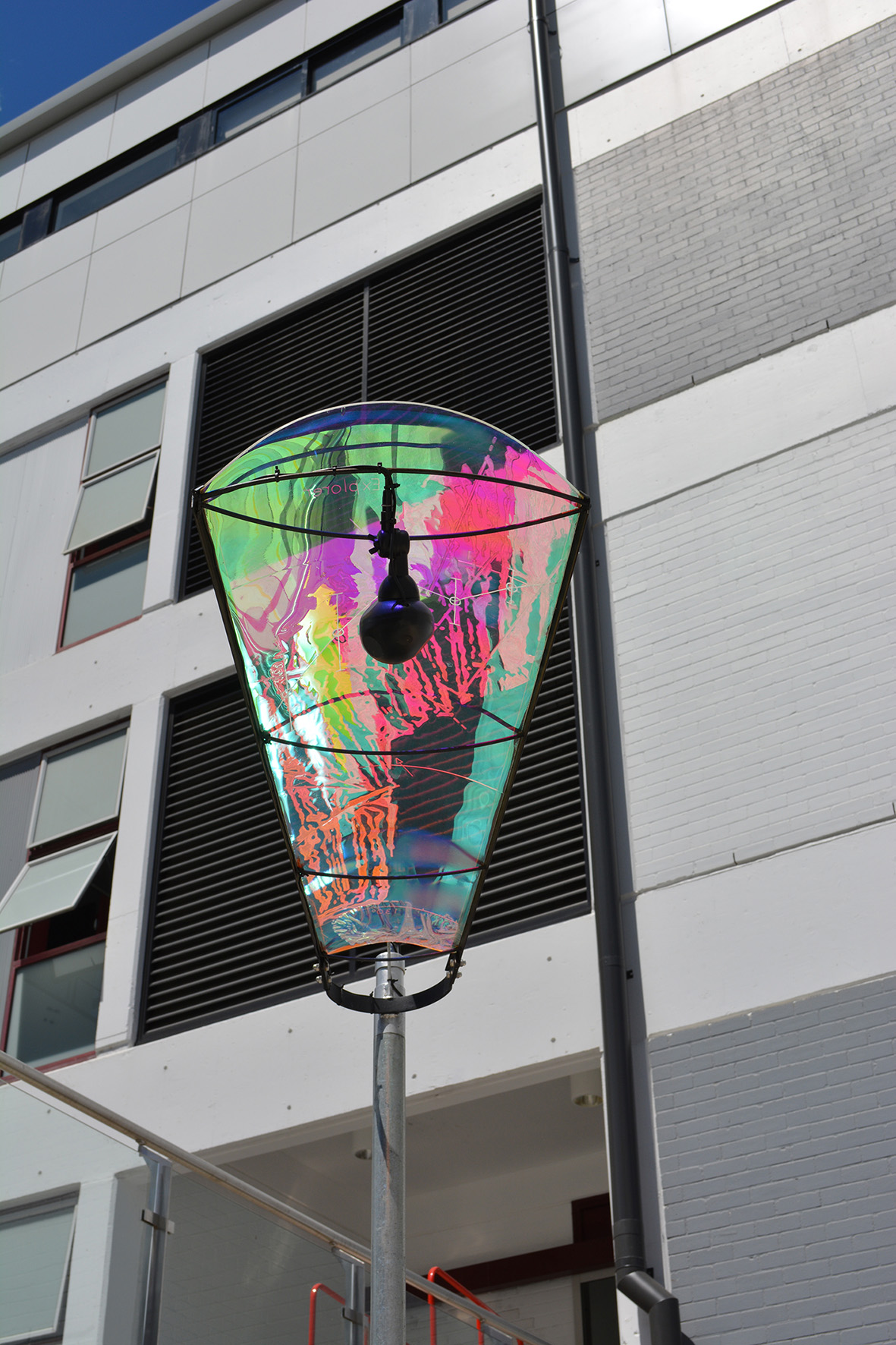
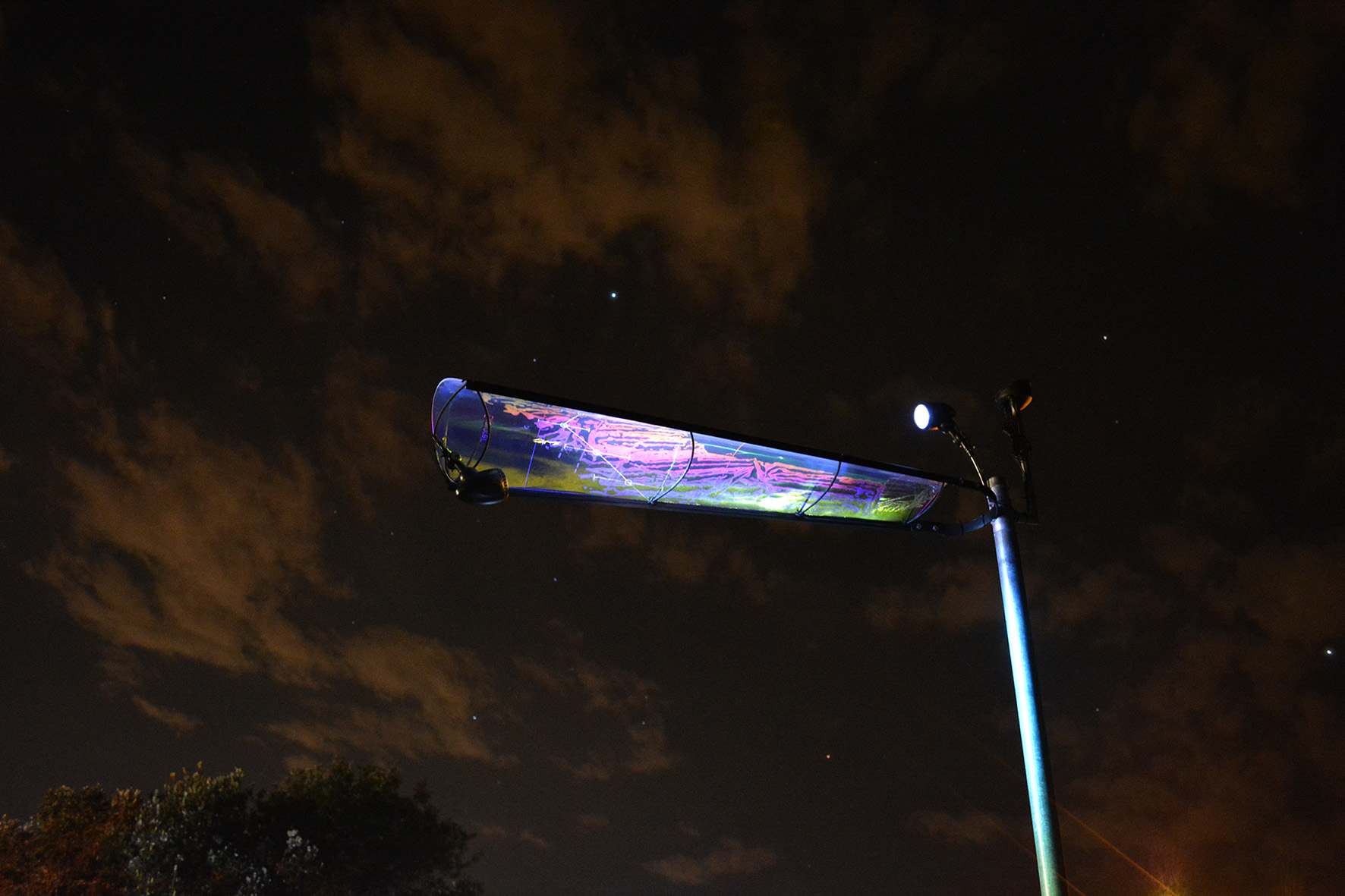



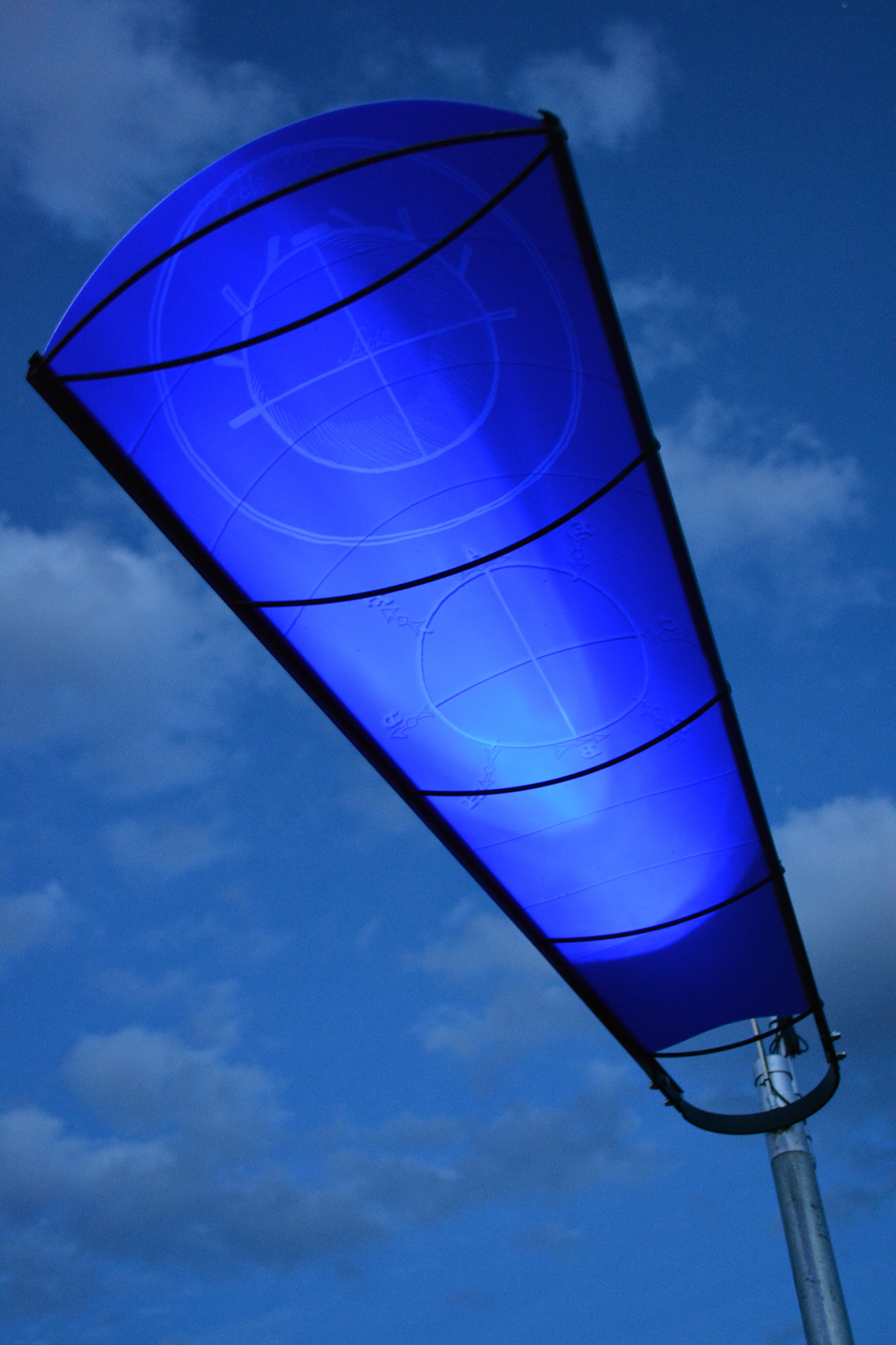



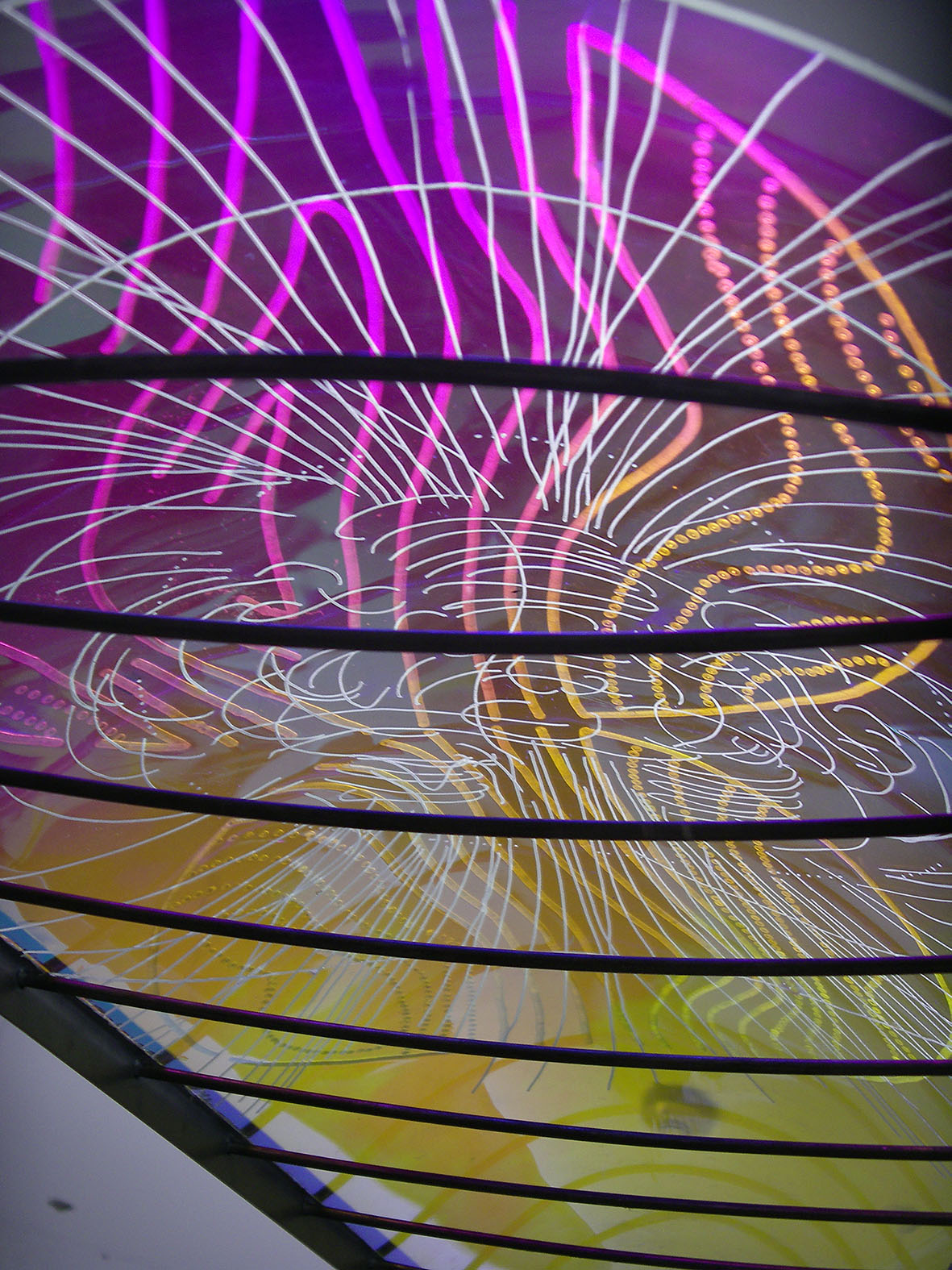
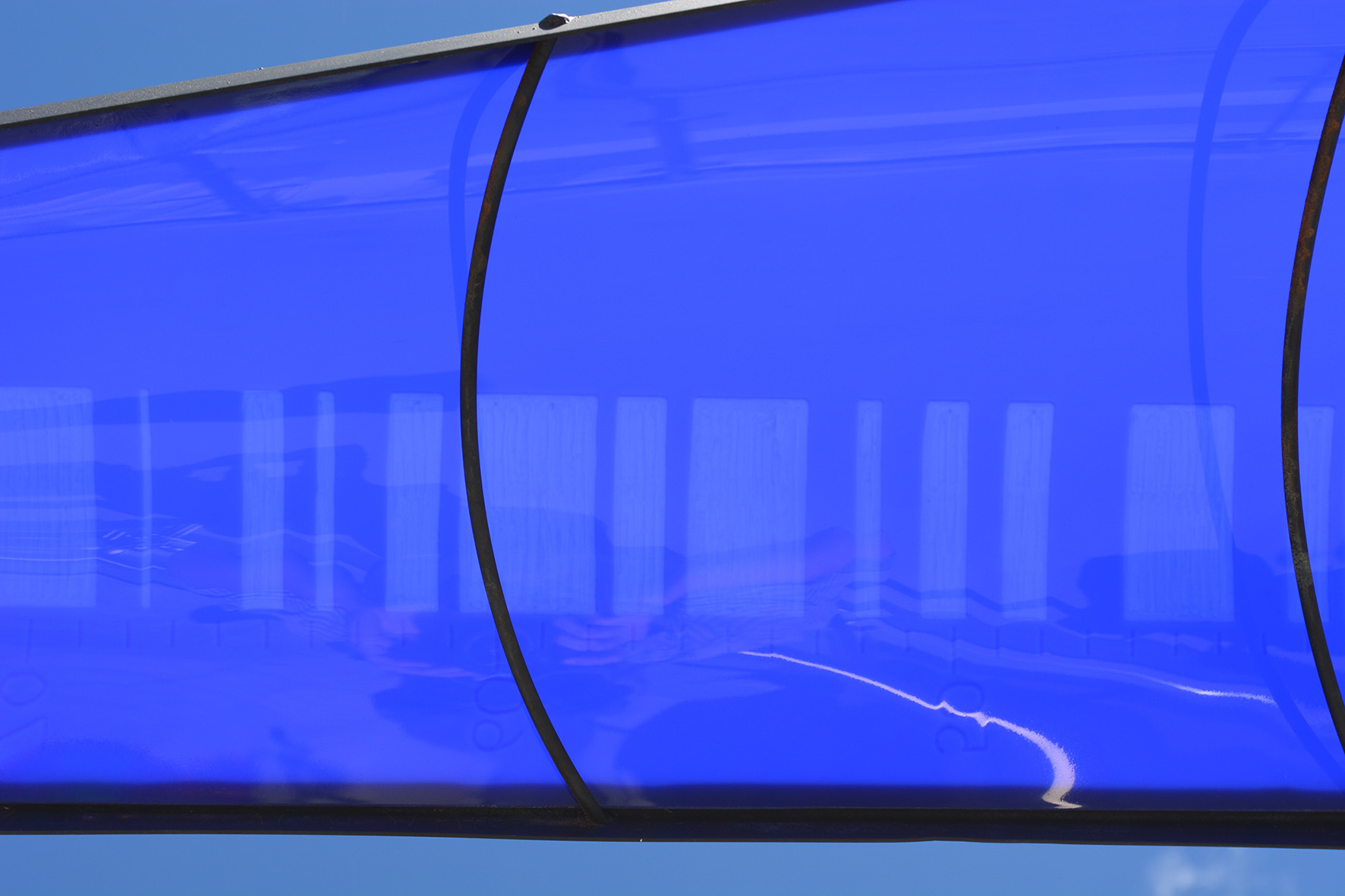

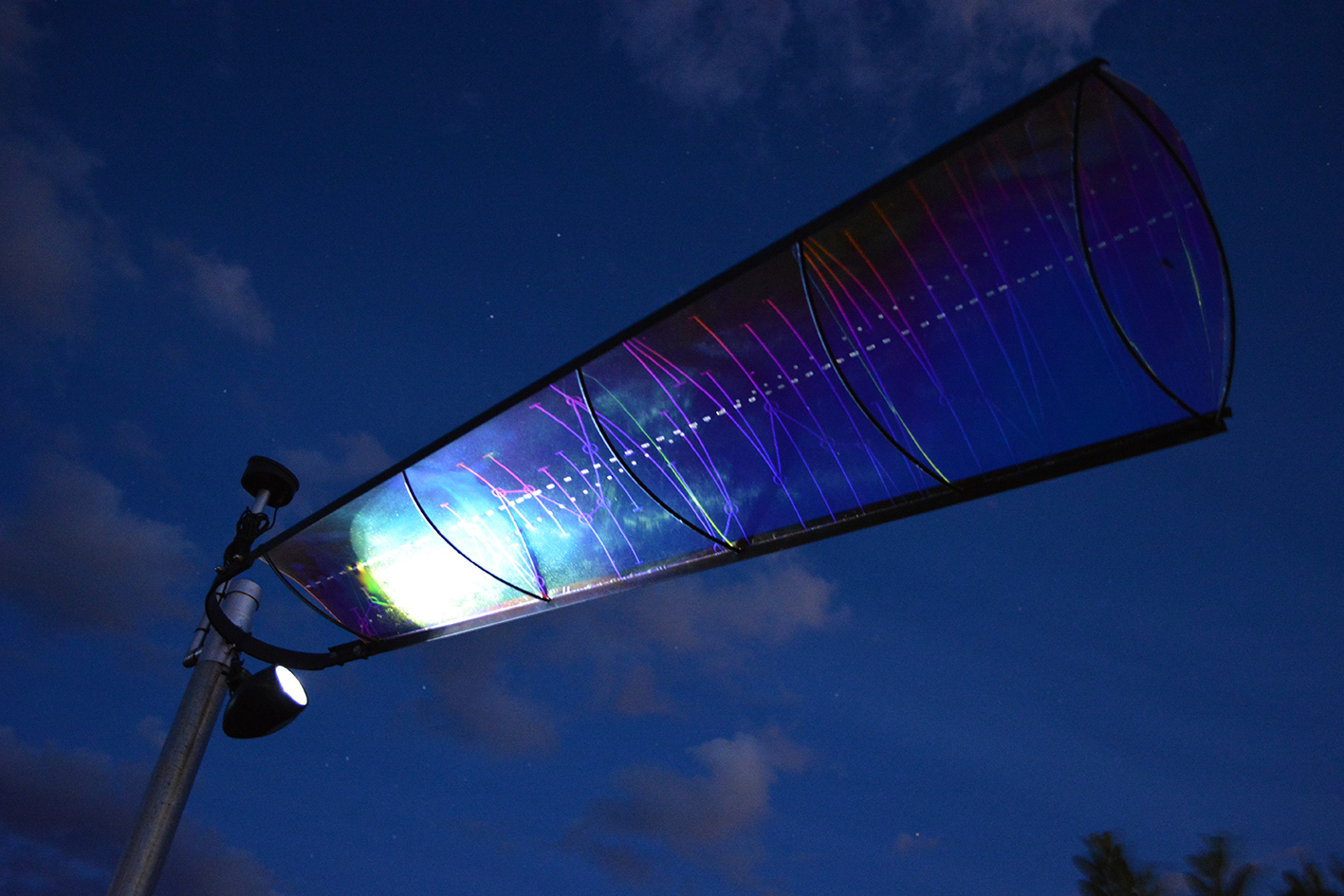

2012. Panel I: The Spreading Sea Floor (Marine Magnetic anomalies symmetrically about an underwater ridge, Heirtzler et al to Lawrie with Bullard's convective motions in the equatorial plane.
Installation view of panel I at UNSW Art & Design in 2014.